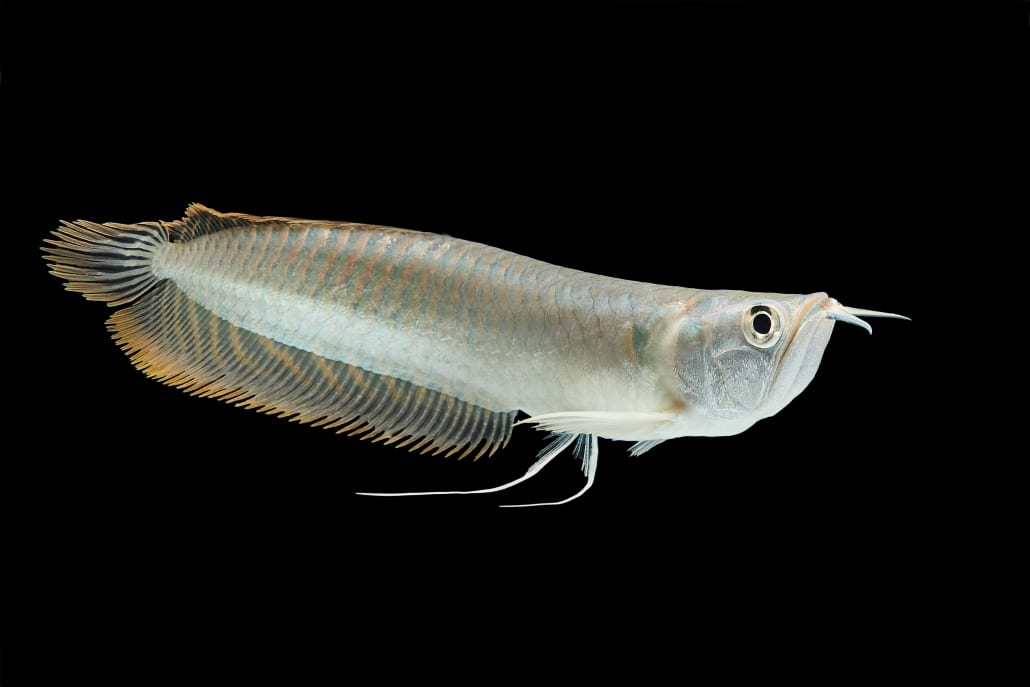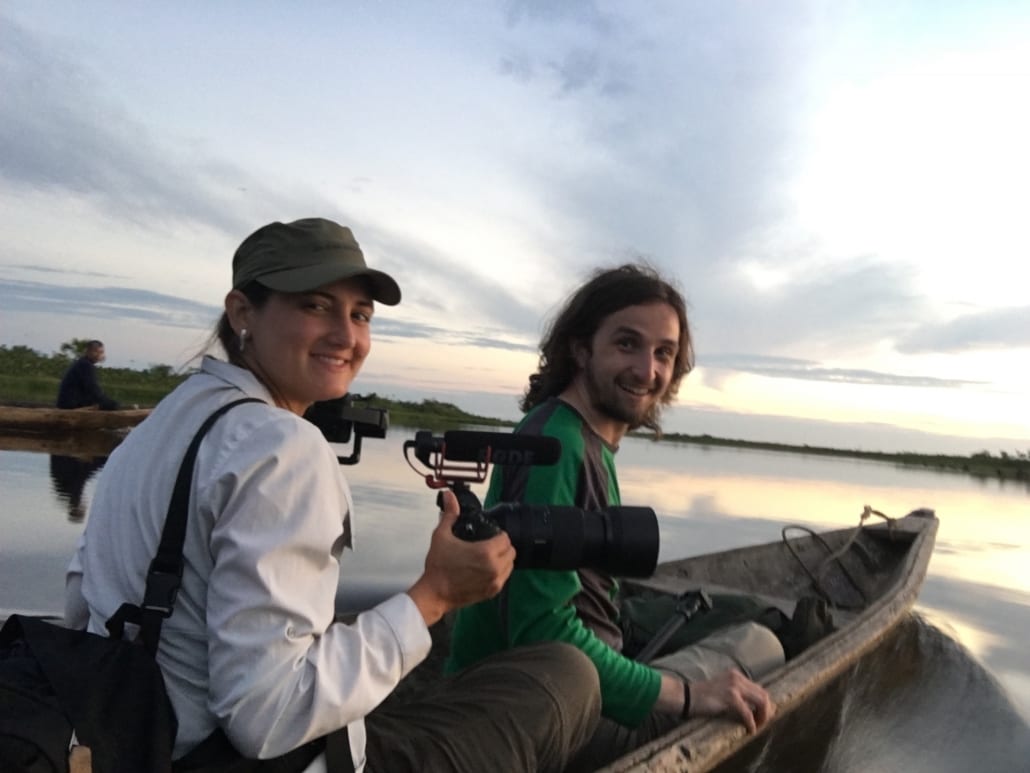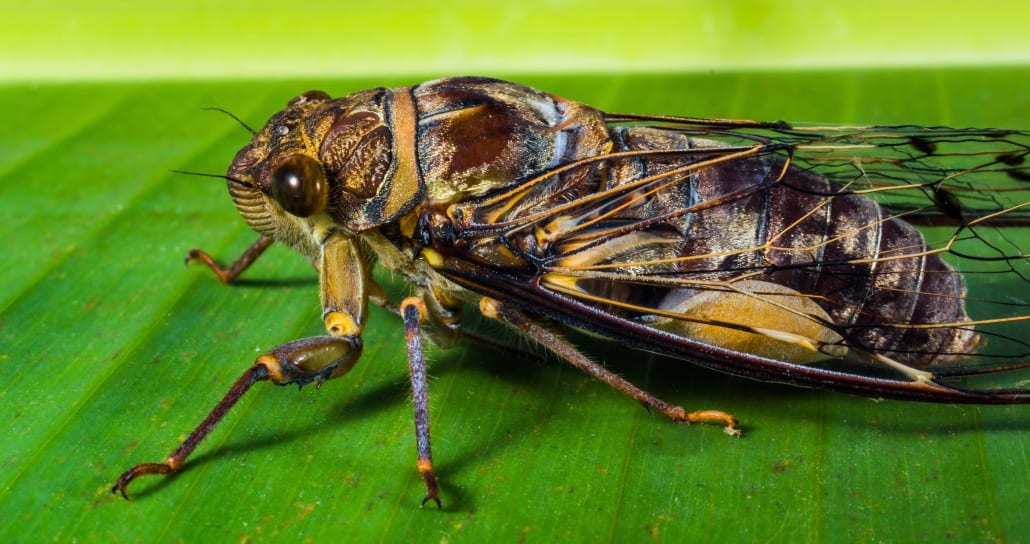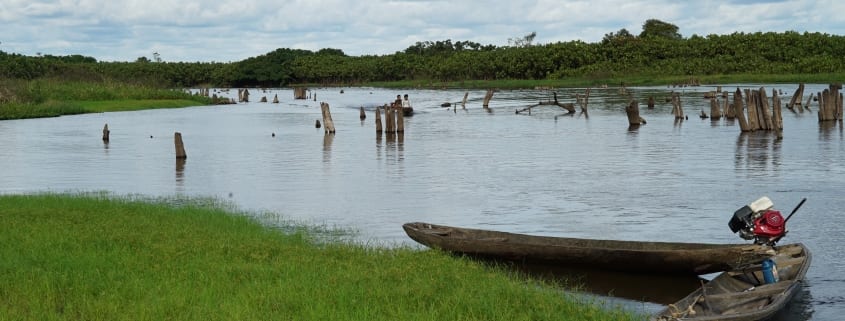Bugs, Bugs Everywhere
Rainforest Trust is currently in production on a series of documentary films centered around stories of tropical conservation. But here on the blog, we’ll provide some of the behind-the-scenes anecdotes of film production.
I’m two inches above the water in a hollowed-out canoe. It’s an hour before sunset. The canoe is zipping into a giant lake dotted with tree trunks that will become invisible to us after the sun sets and the new-moon sky provides no light to this light-pollution-free corner of the Peruvian Amazon. The water is filled to the brim with piranhas and caimans. I have $5,000 worth of camera equipment in my lap. And we have one chance to film a giant, silver fish with a habit of leaping out of the water called the arowana.
So, needless to say, I’m feeling some pressure to make sure everything goes well.
It’s our first full day in Wuicungo, a small town on the Tapiche River in an expansive and isolated corner of the Peruvian Amazon. The town’s chief, Roberto Tafur, is the main character for our first film. Roberto has been leading this community, its fisherman’s association and a federation of all the communities along the Tapiche and Blanco (nearby river) basins in their fight to protect the surrounding forest from outsiders coming in to log and fish.
Because in Wuicungo, fishing isn’t only about food. Fishing is about being the start of an international supply chain worth millions of dollars.
Silver Arowana (Osteoglossum bicirrhosum) are prized as aquarium fish in East Asia. The fish is a status symbol — often selling for hundreds of dollars per fish. People used to keep Asian Arowana (Scleropages formosus), but authorities banned Asian Arowana trade in the 1980s due to declining wild populations in their native Borneo. So people turned to the not-banned, still-impressively huge Silver Arowana.

A Silver Arowana
But Silver Arowana don’t live in Borneo, or anywhere near East Asia. They live in South America. So, during the 1990s, trade in Silver Arowana increased around tributaries of the Amazon.
Neglected and ignored for decades, indigenous communities in the far corners of Peru’s Amazon Rainforest have had to find innovative ways of supporting themselves and their families in the modern, global economy. Many communities turned to farming and some to cattle ranching. Some communities even became part of logging or mining operations, because despite these operations destroying the forests, they provide needed income. But Wuicungo, while in the depth of the rainforest, is surrounded for miles by wetlands and lakes. So farming and ranching are off the table.
But the lakes are filled with hundreds of species of fish. And one of those species happens to be worth hundreds of dollars a piece for millions of people thousands of miles away. So for Wuicungo, the arowana is more than an opportunity to make a little money — it’s an opportunity for stability and economic self-determination. Now, thanks to management plans developed by the community along with Rainforest Trust and our Peruvian partner, the Center for the Development of an Indigenous Amazon, Wuicungo’s arowana harvest is ecologically and economically sustainable.
So as I sit in that canoe, I know that to tell this story well on film we need to get good footage of the arowana.
We’re heading out at night because the arowana are easier to spot at night — both for photography and for the fishermen. So Katie Schuler, our film’s director, will film with our low-light capable camera while I run the LED light panels.

The author (right), and Katie Schuler, the film’s director, on the way to film arowana
The sun sets on the lake and the nighttime ecosystem springs into action. Nighthawks and bats soar low over the water, nabbing the insects that are chewing up our arms, faces and ankles. The caimans peek above the water, their eyes reflecting orange from our headlamps. Small fish ride the wake of our canoe and fall into our laps.
After a while we reach the shallows where arowana are abundant. The peki-peki motor shuts down and a canoe paddle takes over. The sounds of lake, no longer drowned out by engine noise, hum around us.
And then we spot one! An arowana!
I throw on the lights, the camera rolls and we move the canoes around to get a good look at it. Everything is going right according to plan.
Except for an itching on my shoulder. And another on my shin. And a few itchy spots on my neck. I crane my neck to inspect myself — and then sit frozen in fear.
Now, the lake is more of a wetland. And we all know wetlands are full of insects. And what do insects love more than life itself (often quite literally)?
Light.
And what do I have in my hand?
The brightest light for miles in this moonless, light-pollution free corner of the Amazon Rainforest.
So every insect around has spotted me and decided to enjoy this light. And I am covered in them. Moths, katydids, flies, crickets and gnats cover our canoe, myself and Katie. But the worst are the cicadas.
Now before you laugh at the wildlife conservationist who’s afraid of insects, I have to tell you a story about cicadas.
In Eastern North America, some cicada populations live in a 17-year cycle. Every 17 years, millions, if not billions, of the insects come out of the ground over a few counties, buzz everywhere, cover every surface, devour trees and over-satiate the raccoons and birds who eat them. Ecologically, it’s called “masting,” whereby a population will multiply all at once to increase the individual’s chance of survival. With so many cicadas, it’s impossible for the predators to eat them all. After the few weeks, the news eggs are in the ground, all the cicadas die and 17 years later those eggs will repeat the same macabre dance.

A cicada – potentially one of many, many cicadas.
From a scientific perspective, it’s magnificent. For a nine-year-old kid out camping in the middle of it, it’s a nightmare.
Yes, ever since that ill-fated camping trip I’ve had whatever the opposite of a penchant is for our winged, exoskeleton-adorned friends. It’s not personal — well, actually, it’s personal. My point is that I understand the trivial irrationality of a phobia of flying, hefty insects. But that’s what a phobia is: a trivial irrationality.
So there I am: in the middle of a lake, in charge of manning a light panel, needing to make sure we get the footage we have one chance to capture while covered in the nemesis of the part of my brain controls disgust.
Maintaining my cool, I tried first to kick one of the nastiest cicadas away from me. This turned out to worsen the situation. This cicada screamed when I kicked it. Yes, screamed. Like a human. It sounded like a small human screaming.
I would not do that again.
But as I debated other options for removing said cicadas, a new emotion fell over me. It was the calm that comes from complete, total and inescapable inevitability.
There was nothing I could do to eliminate the arthropods crawling on my person.
Calm from inevitability is a strange sensation. I looked at the cicadas and surmised, “They should worry me. But I don’t care.” When it came down to it, I had no options but let the cicadas make a home on my legs, arms and back. So I did.
But my self-reflection didn’t last long. We had spotted another arowana, a big one, and I was back in action as we filmed. This feeling lingered for the rest of the night — through the caiman scrambling in one of the canoes, through the arowana jumping up and into Katie’s lap and through the long, dark journey out of the lake complete with barely dodging tree trunks and careening sideways from hidden sandbars. We got great footage, the camera equipment made it back safe and no boats or filmmakers were harmed in the making of said movie.
A new dawn was upon me — a world where my childhood-induced phobia of winged insects was to become a thing of the past. Oh, the wonders that awaited me in this upcoming, freer reality!
But that night, as I reached for my tent zipper, I spotted, mere inches from my hand, a 4-inch long creature known as a mole cricket. With a name like “mole cricket,” I hope I don‘t need to explain how grotesque these fellas are.
“Yikes!” I cried, leaping back.
Ah, well. Maybe I’ll find that new reality next time.






